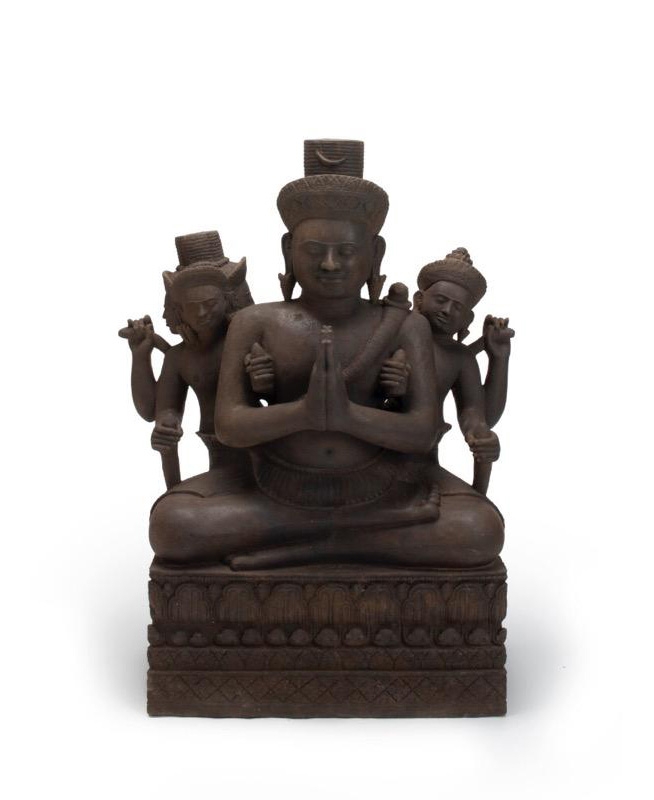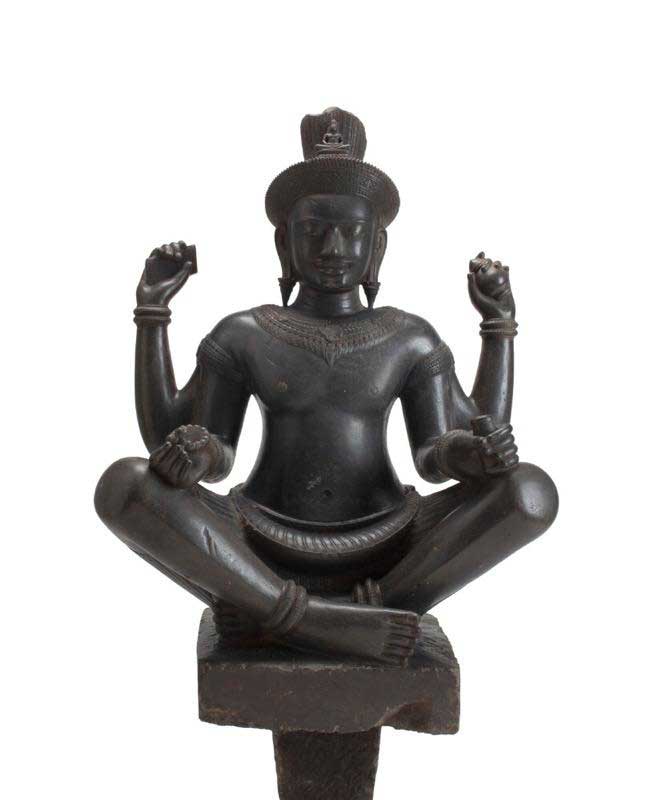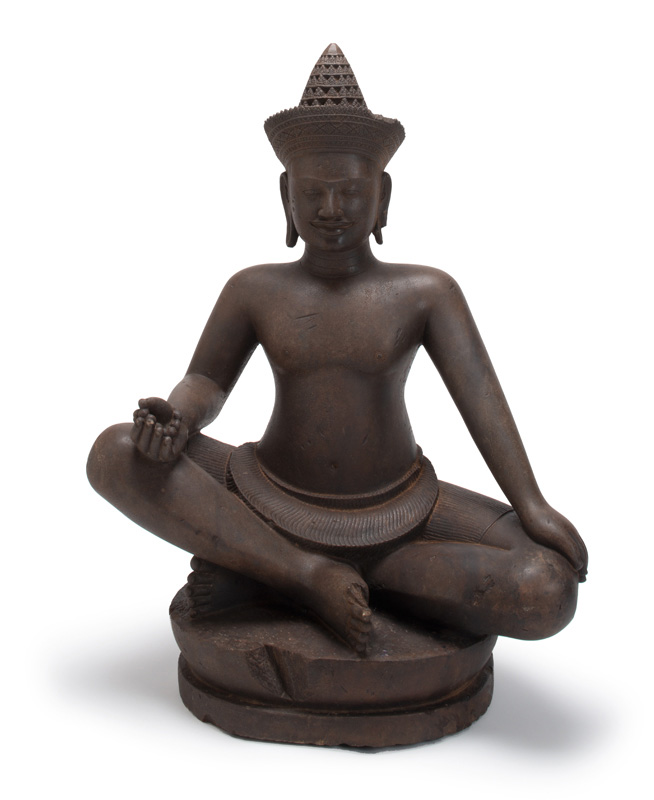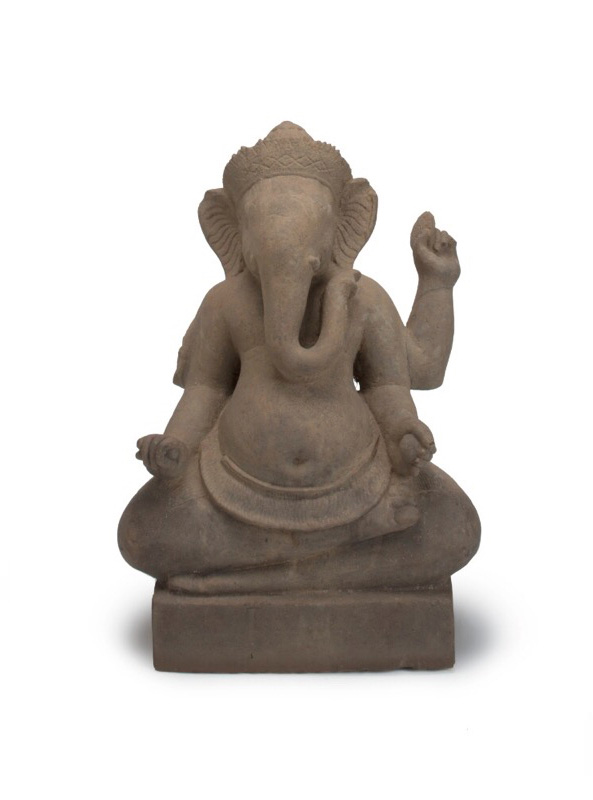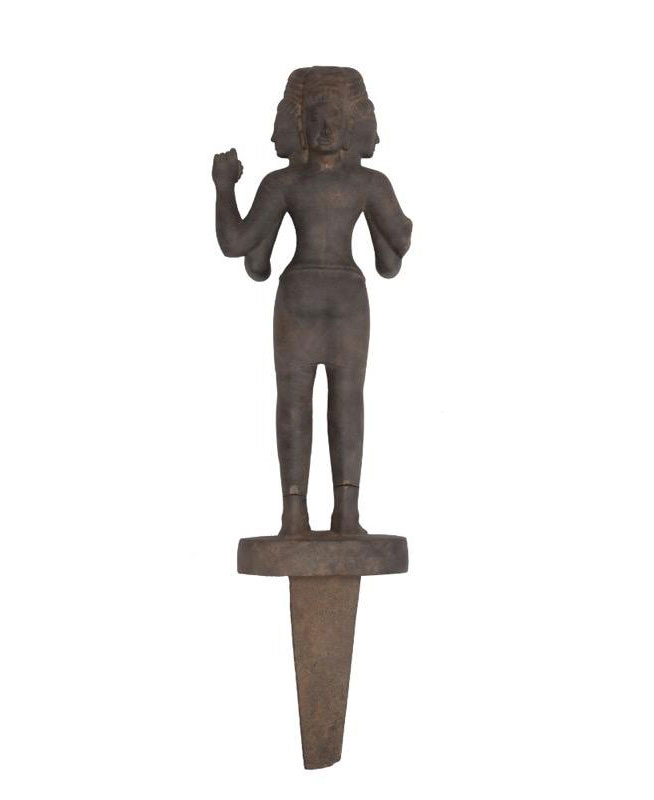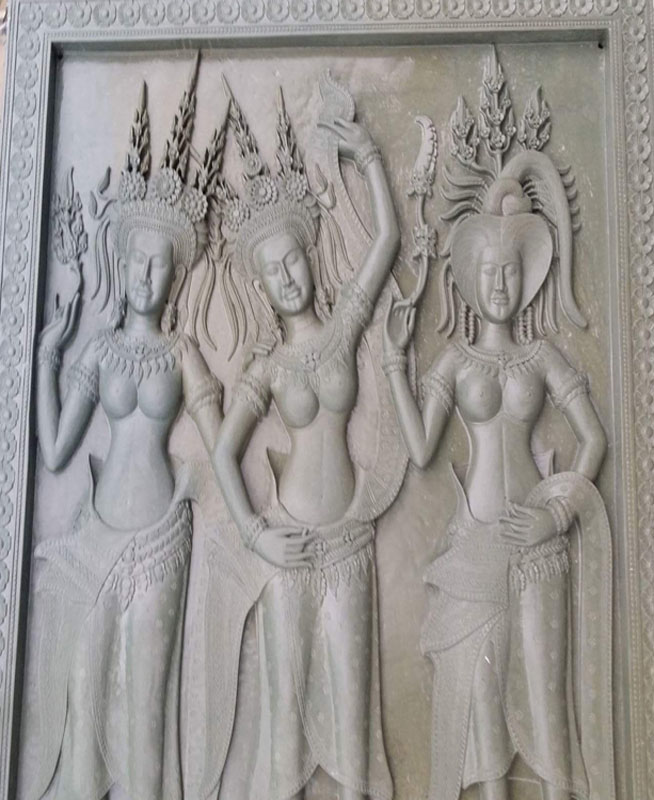GANESHA
8TH CENTURY
PREAH KO STYLE
Ganesh (also spelled Ganesa or Ganesha) is the Lord of Good Fortune who provides prosperity, fortune and success. He is the Lord of Beginnings and the Remover of Obstacles, both physically and spiritually. Ganesha embodies spiritual symbolism with such gorgeous intricacy.
The Lord of Beginnings, The Remover of Obstacles, and The Deity of Good Fortune, Ganesha is perhaps one of the most well-known deities. Despite the famous depictions of his elephant head, he was not born that way.
He is a representation of protection and power and a lot of his symbolism is related to safeguarding us from life’s physical obstacles. As well as removing obstacles, Ganesha is known to place obstacles in front of us, intending for us to learn, grow and overcome them.
Today it is common to see images and statues of Ganesha at the entrances of Cambodian temples and sacred buildings as a means to protect. Ganesha mantras are chanted as a way to bring protection, luck and power, as well as removing any potential for future obstacles.
His elephantine head t is a symbol of strength and power. While many wild elephants are not dangerous, the ones that are found alone in the wild are extremely threatening and often destructive. So, although they often come across as gentle and calm, they have the potential to wreak havoc if they’re treated badly.
Ganesha’s large ears show that he listens to those who ask for help, providing the ability to listen to many people.
His large head symbolizes his intelligence and thinking ability.
His small mouth indicates that he listens more thus speaking less.
His one broken tusk represents cherishing the good and throwing out what is no longer needed.
His small eyes are for concentrating and direct focus.
His large stomach shows that he is able to consume and digest BOTH the good and bad in life
In Ganesh’s four hands he holds various objects, as do many deities. Khmer sculptors include these intricate and symbolic objects to credit the importance in which these deities can assist us with as we pave our way through life.
In one hand he holds a rope, representing Ganesh’s ability to help pull us up towards our truest goal of realisation and liberation. Another hand holds an axe which assists in cutting all attachments with the impermanent and material world we constantly long for. In his third hand he holds a bowl full of sweet treats which represent rewards for spiritual development. His fourth hand creates the blessing mudra. This hand gesture is taken by many of the gods to bestow blessings on those who worship them. The Ganesh mudra represents the strength and power available for both the physical heart and heart chakra. The position of the hands are clasped in front of the chest with the elbows wide, represents protection. Contrary to that, this mudra reminds us that our most challenging obstacles are brought on ourselves.
Or - Contact Us Directly: 823.456.7890





